French Drains 101: How Well-Placed Trenches and Pipes Can Keep Your Property Dry
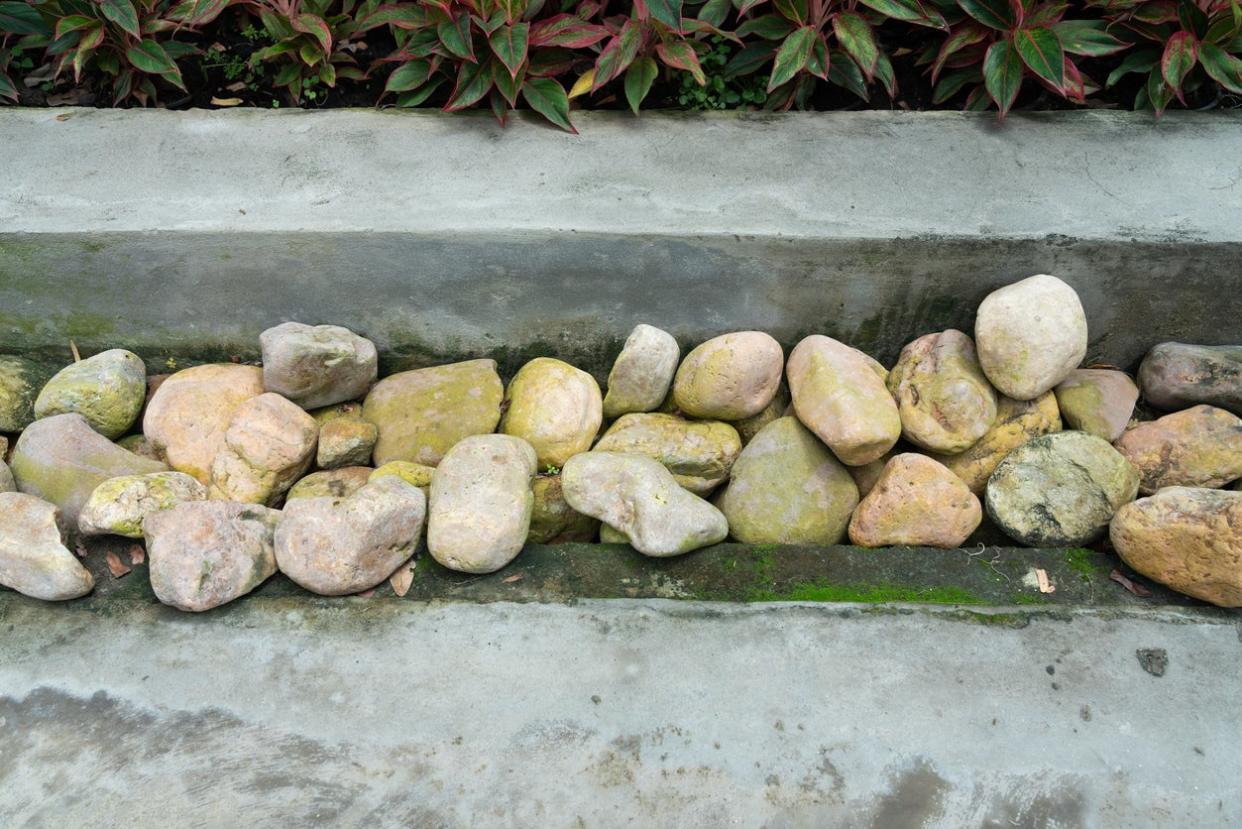
Things with “French” in the title are usually fancy, right? Poodles, perfume, pastries. But a French drain is nothing more than a ditch in sloped ground, inset with a perforated drain pipe under a layer of gravel. That pipe funnels storm water away from where you don’t want it—along the foundation, for example—and deposits that water in a more desirable place, such as the municipal storm drain or an underground rain barrel or cistern.
What is a French drain, and how does it work?
From the outside, a French drain looks like a rock drainage ditch, and when done well, like a nice hardscaping element. Embedded in that gravel is a drain pipe that is set at an angle to carry water away from the home. You can identify a French drain on your property by finding the exposed end of pipe on the downward slope.
All of the elements of the French drain are designed to allow water to pass through easily, preventing it from pooling in the ditch. Water passes through the gravel or stone and through the holes in the perforated pipe.
Landscaping fabric wrapped around the pipe allows water to pass through while preventing weeds, dirt and other debris from clogging the holes. The pipe carries the water to a drainage area in the yard or the municipal sewer system.
The Advantages of Installing a French Drain
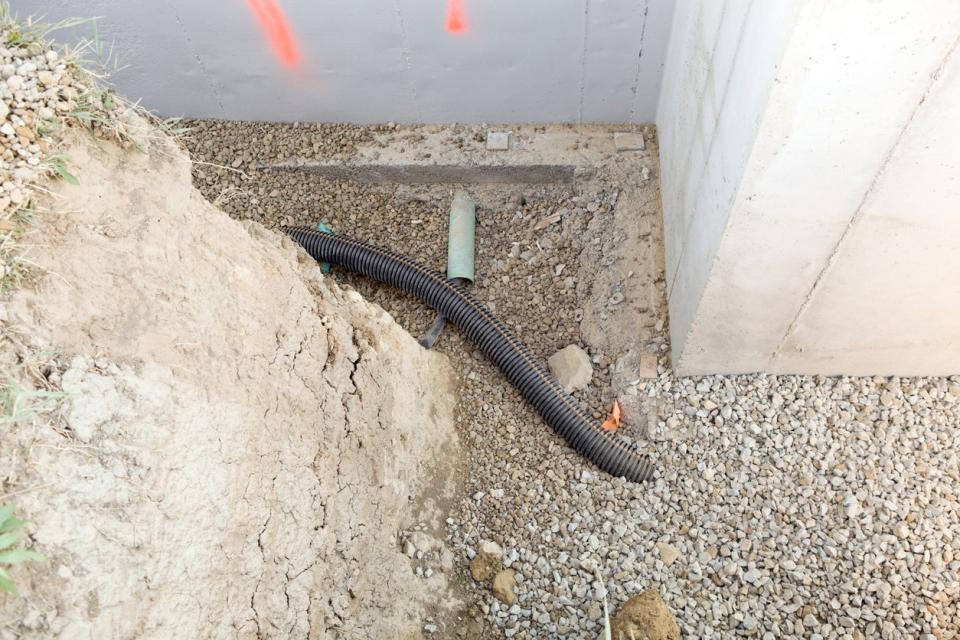
Photo: istockphoto.com
Whereas gutters collect precipitation as it runs off the roof, French drains manage water at ground level. Let’s say that after a rainstorm, water tends to pool in a particular low spot on your property. Rerouting the flow of water with a French drain would alleviate that problem.
A French drain also provides a solution for "wet" basements, or basements in which water presses against the foundation and gradually leaks through. With a French drain, however, water near the foundation can be rerouted and deposited elsewhere.
If water continues to permeate your basement despite seemingly adequate outdoor drainage, you might need to install a French drain indoors. Installation involves cutting a trench in the basement slab along the perimeter of the foundation, laying pipe in the trench, and putting in a sump pump to move water from the interior to the exterior.
RELATED: How to Install a Sump Pump
When You Shouldn’t Install a French Drain System
While a French drain is the solution to some swampy yards, it’s not the answer for every drainage problem. French drains, like the rain gutters on your home's roof, are designed to move water off your property, or to a spot where the water won't damage your home. As such, there must be an adequate slope to allow the French drain to direct water away from the home. Otherwise it will simply pool in the French drain ditch, adding to your home’s drainage woes.
When deciding whether a French drain is the right solution for your water issues, it’s important to think about where the water will ultimately end up. The system should drain into a waste area, a street, a municipal drain, or a suitable area of the landscape (such as near a tree or to a rain garden). It should not drain into your neighbor's yard. If there is no suitable place where the water can go, consider a different option.
French Drain Installation: An Overview of the Process

Photo: Homedepot.com
Learning how to install a French drain isn’t complicated. This project can be completed with a few simple gardening tools and basic supplies. Before beginning with your French drain installation, it's important to determine whether your municipality requires a permit for the project. Although most communities allow French drains, there are some—particularly those that are near wetlands and other sensitive environments—that do not.
First, dig a “French trench.”
Whether installed in the yard or the basement, a French drain works on the same principle. First, a drainage trench is dug, sloping in the direction you want the water to go. A slope of 1 inch for every 8 feet in length is generally recommended. To determine the correct angle on your property, use a level string tied between stakes, then measure the distance from that reference point to the trench bottom.
Because there is a direct relationship between the diameter of a drain pipe and its relative effectiveness, your trench should be at least 12 inches wide. Aim for a depth between 18 and 24 inches. If you’re installing a French drain around your foundation to prevent basement moisture, take care to position the pipe below slab or finished floor level.
Add in the gravel.
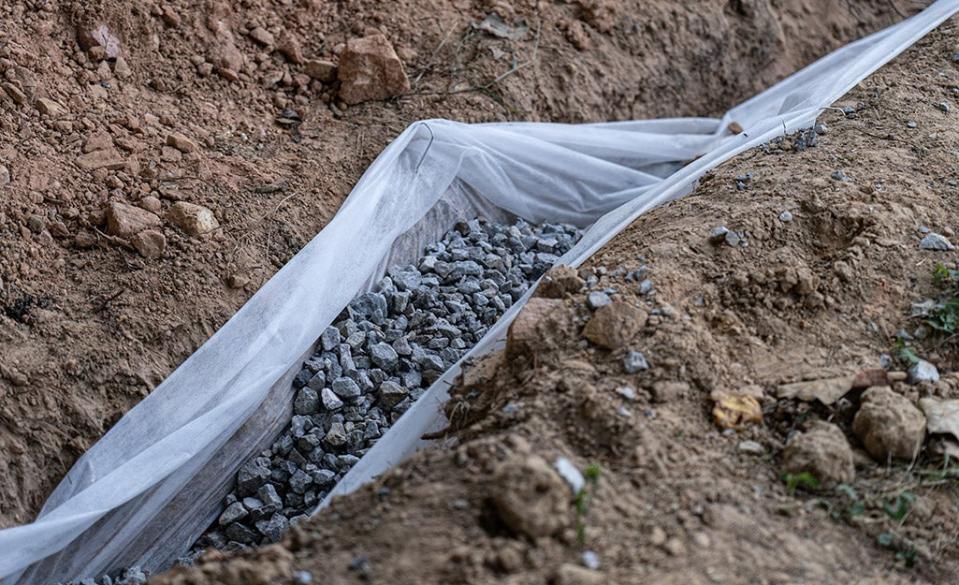
Photo: Homedepot.com
After digging your trench, fill it with a few inches of crushed stone or gravel that is at least ? inch in diameter. The rocks should be coarse and washed before laying them in. Cover the stone with water-permeable drainage fabric to discourage weed growth.
Lay piping into the trench.
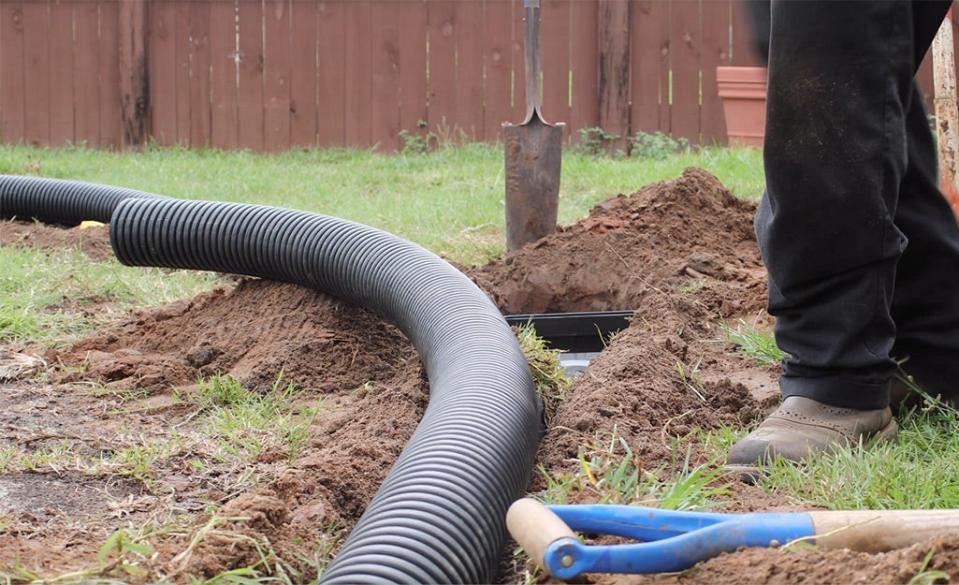
Photo: Homedepot.com
You can use one of two types of piping: rigid PVC with predrilled holes, or flexible drain pipe cut with slits. PVC lasts longer, and if you encounter a clog, it can be cleaned with pressure or a plumber’s snake. Flexible pipe, on the other hand, is less expensive and easier to work with.
Opting for PVC? You can attach a 45-degree angle joint to the start of your pipeline and then connect the joint to a pipe that can be left sticking out of the ground for an easy-access clean-out point. Another important thing to remember about PVC installations: Orient the pipe holes downward. Counterintuitive though it may be, French drains work by allowing water to flow into them from below.
It’s also possible to create a pipeless French drain by digging a sloped trench, lining it with landscaping fabric, then filling the trench with gravel or stone for a dry river bed appearance.
Wrap the pipes and fill the trench.
Wrap landscape fabric around the pipe to keep dirt and roots from obstructing the system. Finally, infill the trench with gravel to grade. Alternatively, infill with gravel to a point a few inches below grade, then add dirt to span the remaining distance. Although covering the pipe complicates future maintenance efforts, concealing the drain is more aesthetically pleasing.
Connecting a French Drain to a Municipal Storm Drain
If you’re lucky enough to have a municipal storm drain on your property, you can link your French drain up to it to send storm runoff directly into the city sewer system.
First, dig around the base of the municipal sewer catch basin to see if it has a sleeve on it to which you can connect your French drain pipe. If not, you’ll have to go through the more complicated process of core drilling into the side of the basin and installing a pipe. This job requires specialized machinery most home owners don’t have, so you’ll likely need to hire a pro for the job.
Once there is a connection point with the municipal storm drain, you can connect your French drainage system to the storm drain inlet using any necessary adapters to account for differences in the size of the French drain pipe and the inlet pipe.
RELATED: How Much Does a French Drain Cost?
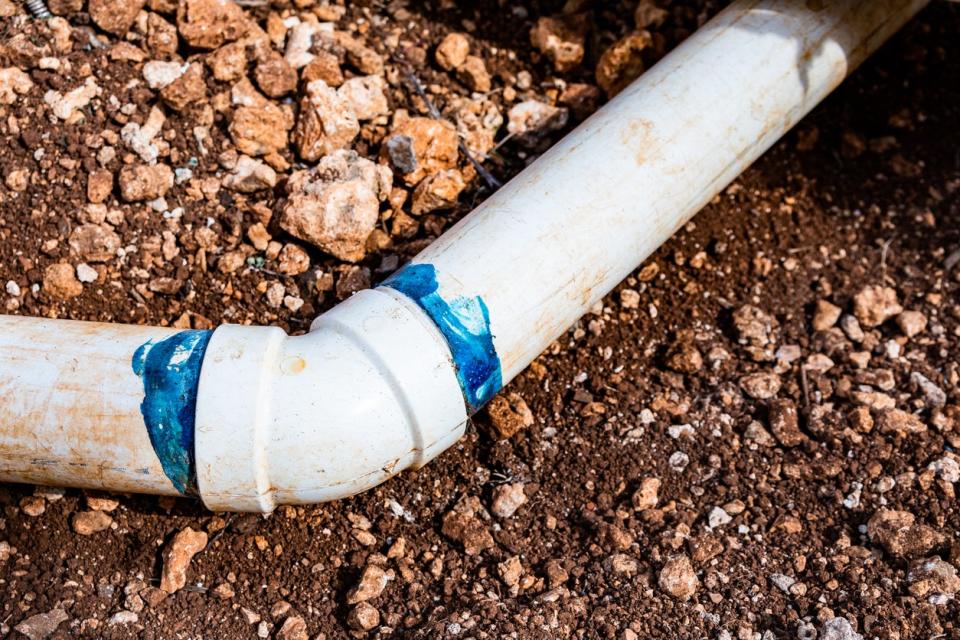
Photo: istockphoto.com
Pro Tips for Installing a French Drain
Instead of wrapping pipe with landscaping fabric, you can buy a flexible perforated pipe that comes encased in water-permeable fabric.
If you are planning to dig a long trench, think about renting a trench digger to make quicker work of it.
Place a catchment barrel at the terminus of your drain as a way of harvesting rainwater for use in the garden.
After trenching, expect to have a large quantity of loose dirt in need of a home. Before you begin the project, decide what you will do with the extra dirt.